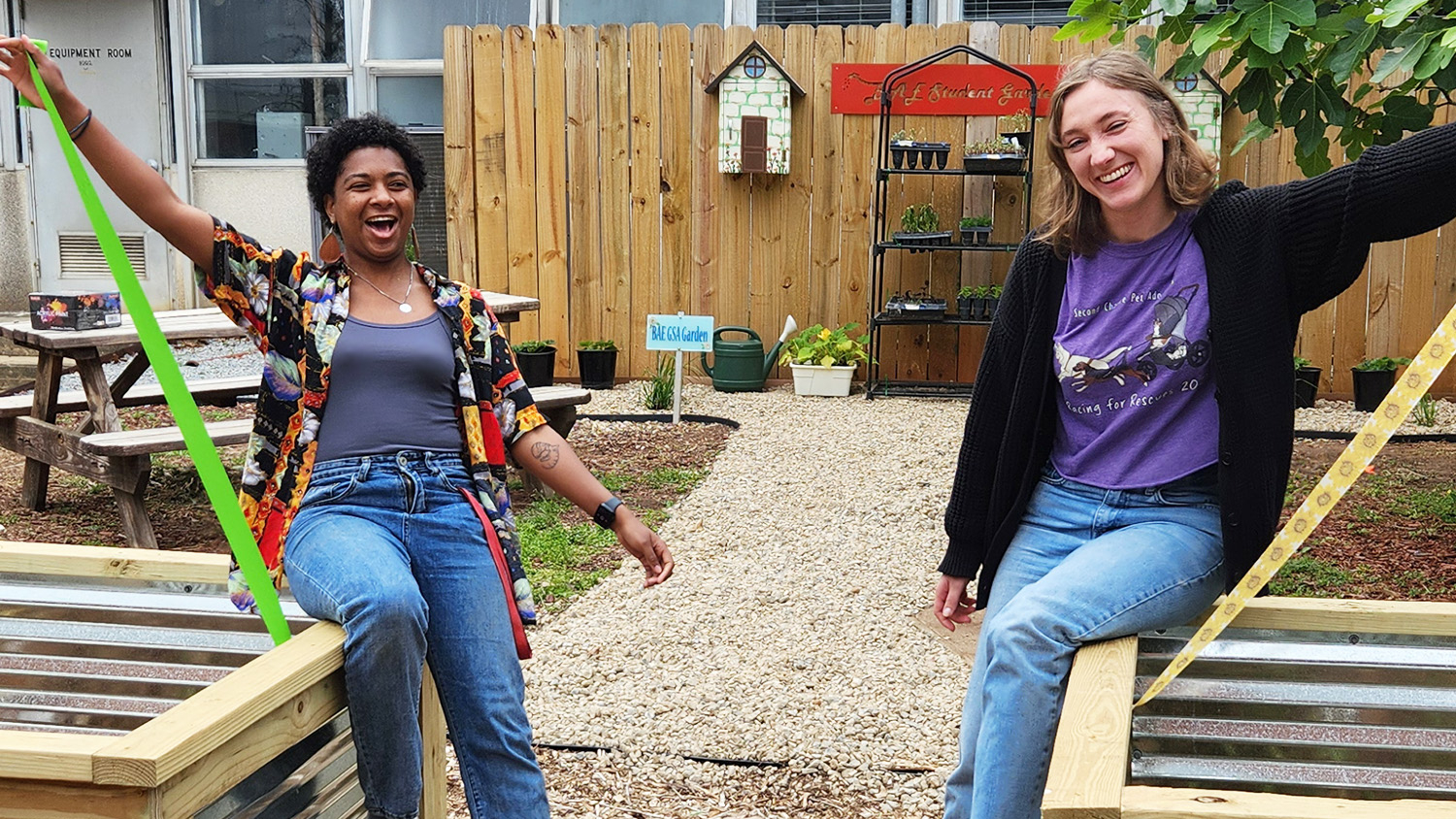
April 2024 was a whirl of activity for horticultural science graduate student Jasmine Gibson. She applied the final touches to a new garden between the Department of Biological and Agricultural Engineering’s Weaver Laboratories and the Weaver Administration Building on central campus and celebrated its grand opening.
The BAE People Ecologically Engineering a Regenerative (PEER) Garden, Gibson’s vision of an educational outdoor space, has transformed the nondescript grassy patch near the intersection of Western Boulevard and Dan Allen Drive into an inviting landscape.
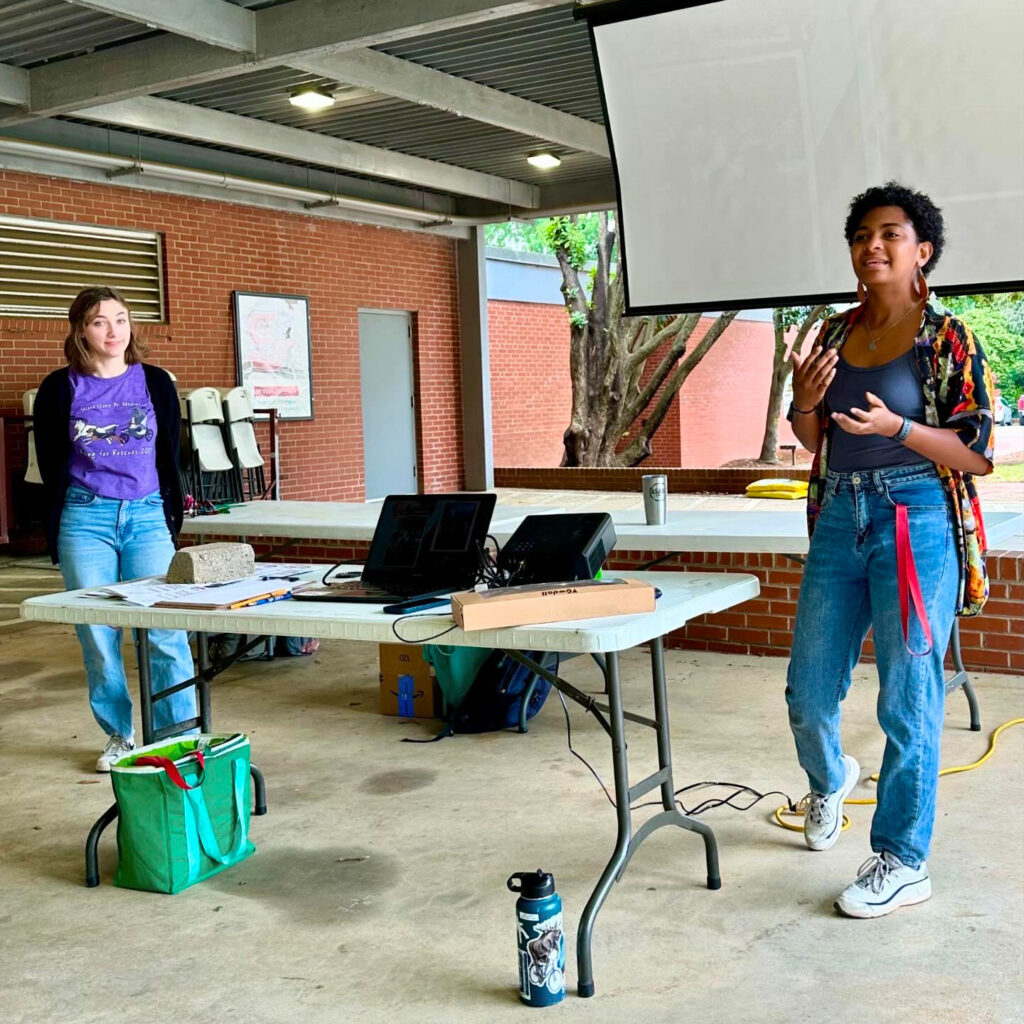
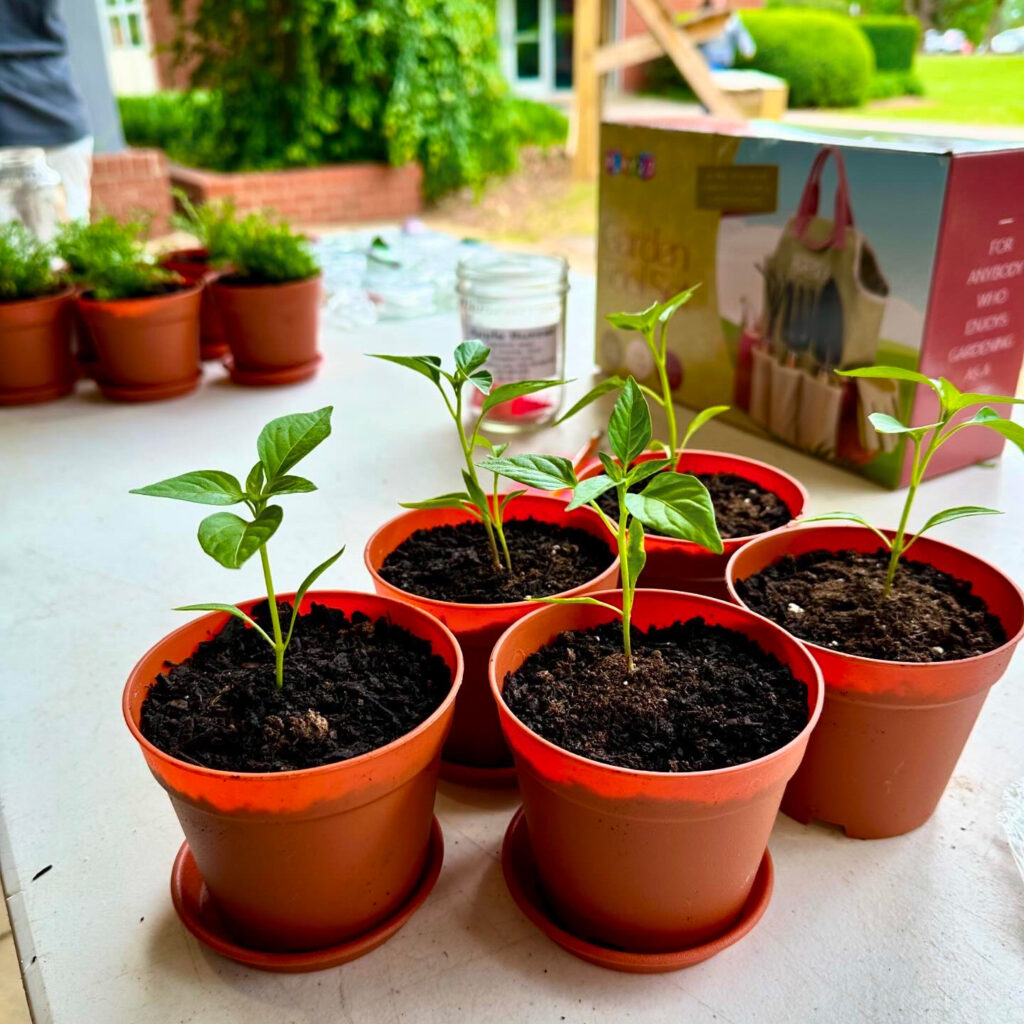
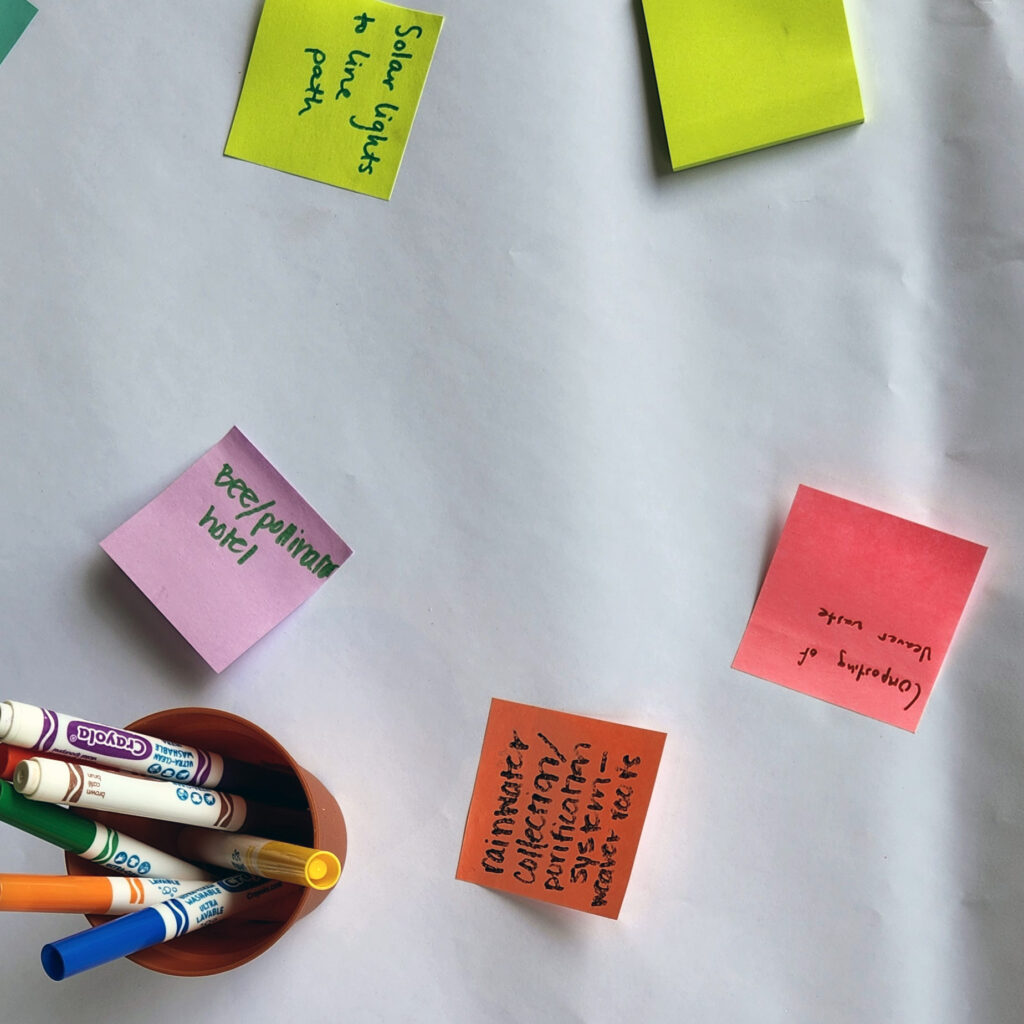
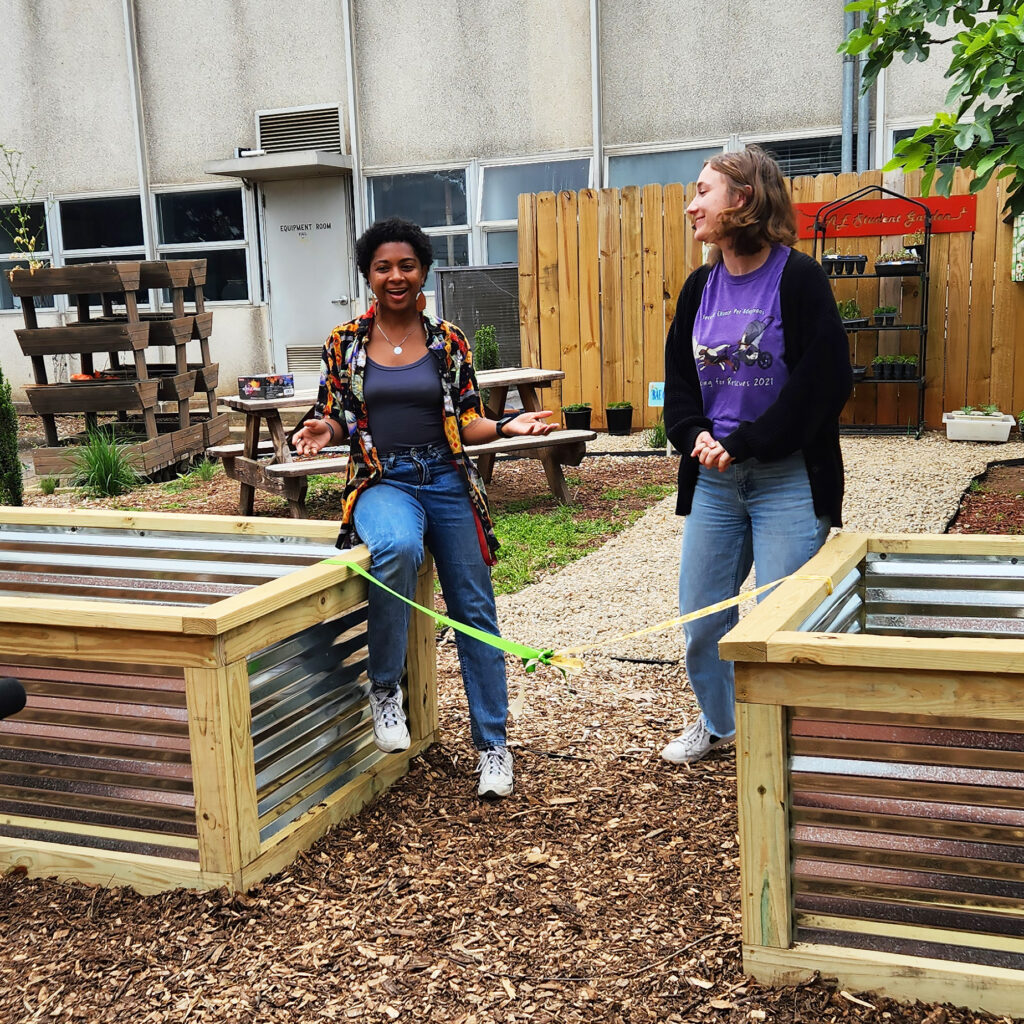
“Now we have a garden people can stroll through, sit in and enjoy while viewing the pollinators and other plants,” Gibson says. “The design I sketched on paper is a reality. So much effort went into this, and I’m excited to see how the garden progresses.”
From Concept to Living Laboratory
Beginning in April 2023, Gibson led the design and construction of the BAE PEER Garden while pursuing her master’s degree through the Department of Horticultural Science in NC State University’s College of Agriculture and Life Sciences.
Her fascination with urban agriculture and sustainable farming stemmed from her former BAE graduate studies and involvement with the Graduate Student Association and a permaculture plant design course taught by Anne Spafford, who now heads the Department of Landscape Architecture at Mississippi State University.
The garden will supplement the biological and agricultural engineering curriculum and demonstrate the benefits of sustainable urban farming practices.
The original garden plans included pollinator and vegetable gardens, permeable walking paths, relaxing spaces, decorative grasses, and even a fig tree propagated from its predecessor at Kilgore Hall.
During the fall semester of 2023, Gibson and BAE students planted shrubs and grasses, adhering to a design that would resonate with visitors.
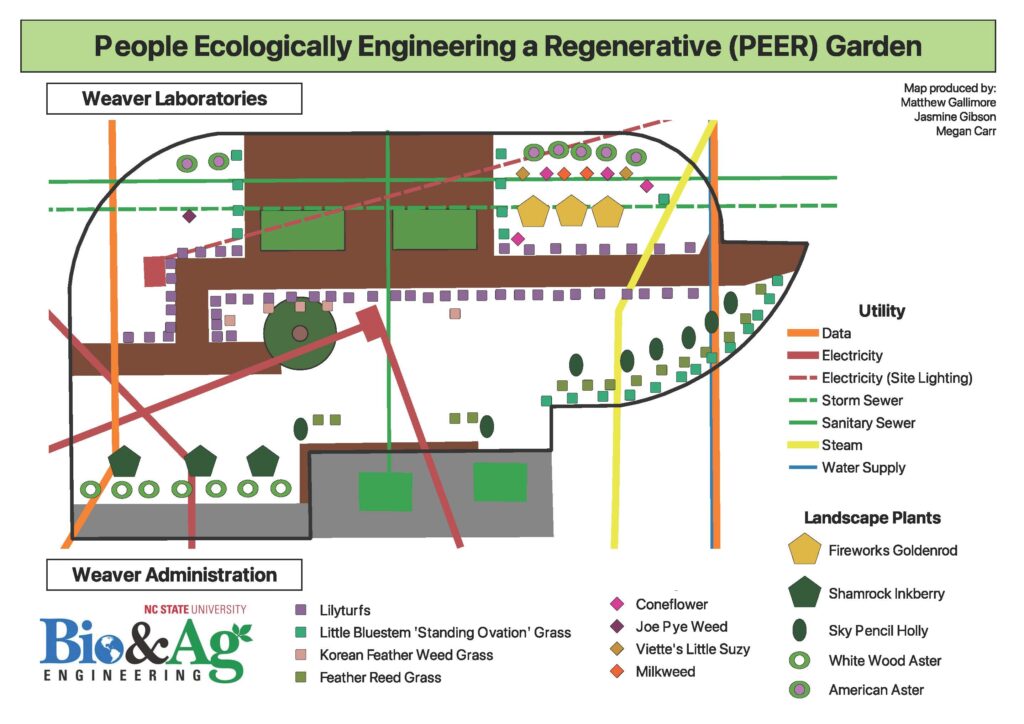
Updated plans include two large raised beds to accommodate the electrical systems underneath. Students installed pollinator plants and grasses in the days leading up to the grand opening.
Planting in the late fall and mid-spring challenged the garden’s survival, as plants were in danger of withering from the early winter frost or summer heat.
“We’re learning about heat stresses and how often the plants need water,” Gibson says. “I believe the garden will thrive if we tackle these challenges early.”
Creating the garden provided the graduate student with a unique opportunity to deliver a guest lecture for students in the World Population and Food Prospects Exploratory Studies course, taught by Alumni Distinguished Professor of Crop Science Bob Patterson.
“Jasmine’s garden provided my Exploratory Studies students an opportunity that otherwise never would happen — a visit to her garden during the fall semester and interactive engagement,” Patterson says.
After her final project and presentation, Gibson anticipates graduating in the summer of 2024. Her project involves creating a maintenance handbook for the BAE PEER Garden with a narrative about the garden’s genesis and its mission to enhance educational opportunities in the BAE department.
It Takes a CALS Village
The BAE PEER Garden wasn’t possible without consistent, dedicated involvement from community members and advisers.
Assistant Teaching Professor Remi Ham’s expertise in community gardens has been invaluable to Gibson. “She’s been my cheerleader, ensuring I stay on track while preparing my final presentation for graduation. Her insights have given me the confidence to discuss my process, plans and design.”
Peer collaborators also proved vital to Gibson’s work. She worked with BAE graduate Carly Graves on the initial garden concepts and with BAE doctoral student Megan Carr throughout the planning, construction and planting phases. Carr also led outreach and began the beginning steps for forming a student club to encourage the BAE community to participate in garden-related activities.
Neil Bain, CALS facilities operations manager, and Joseph Blalock, a BAE staff member, led woodworking workshops to create the fence around the garden’s HVAC system and raised garden beds, which drew active participation from many graduate students.
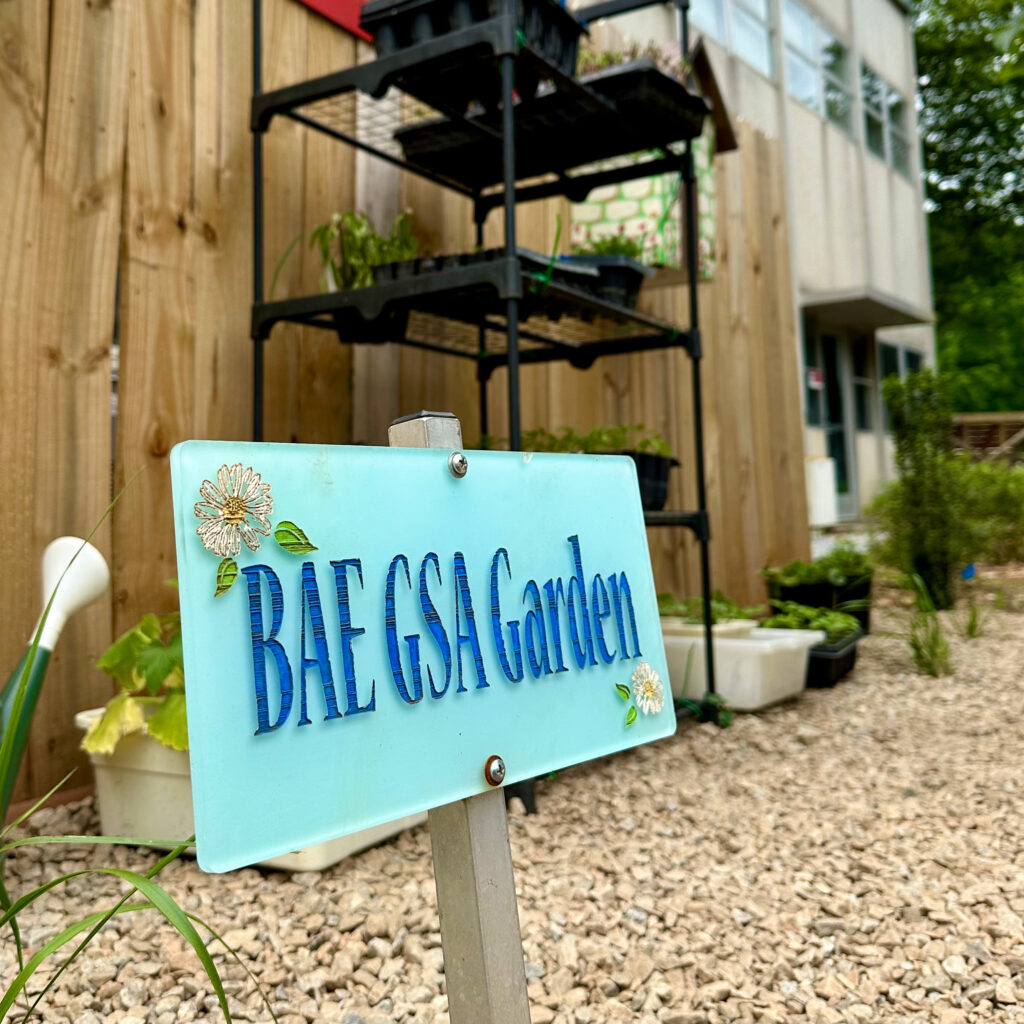
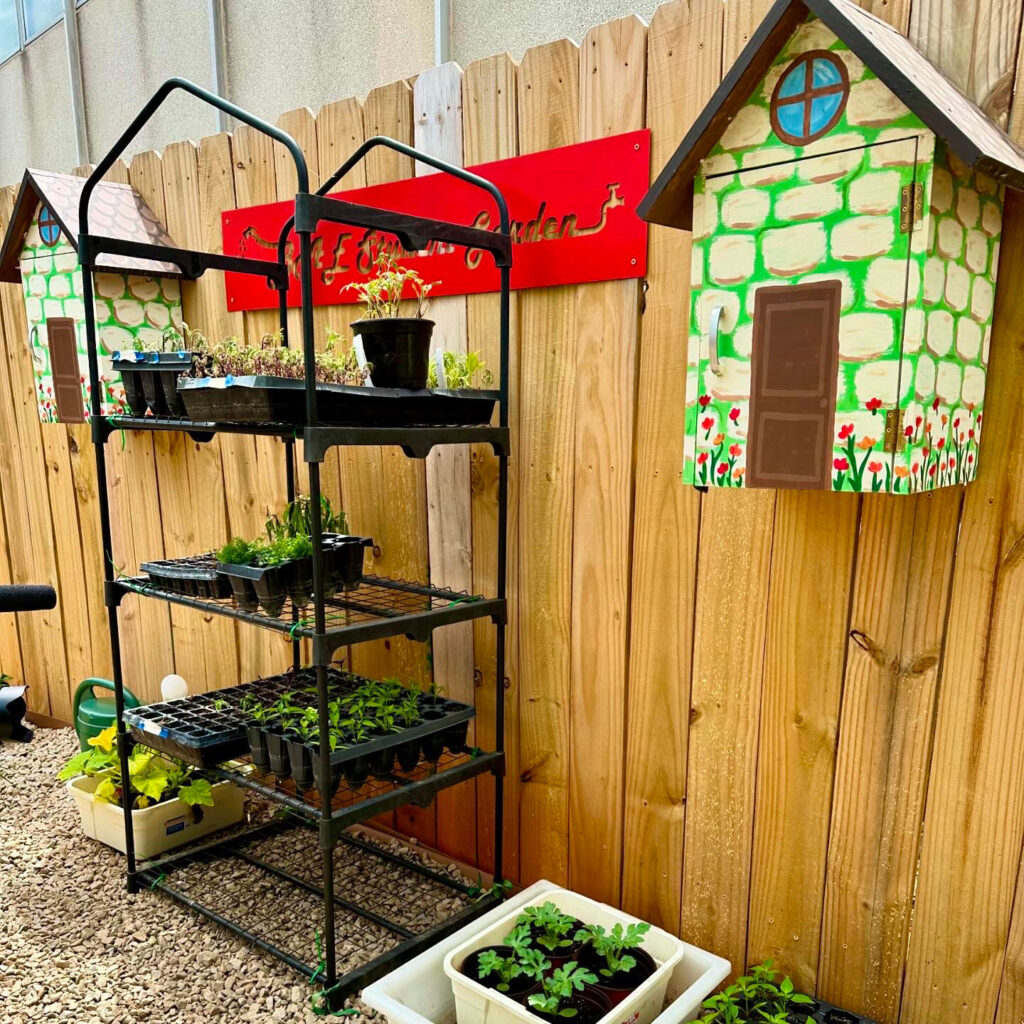
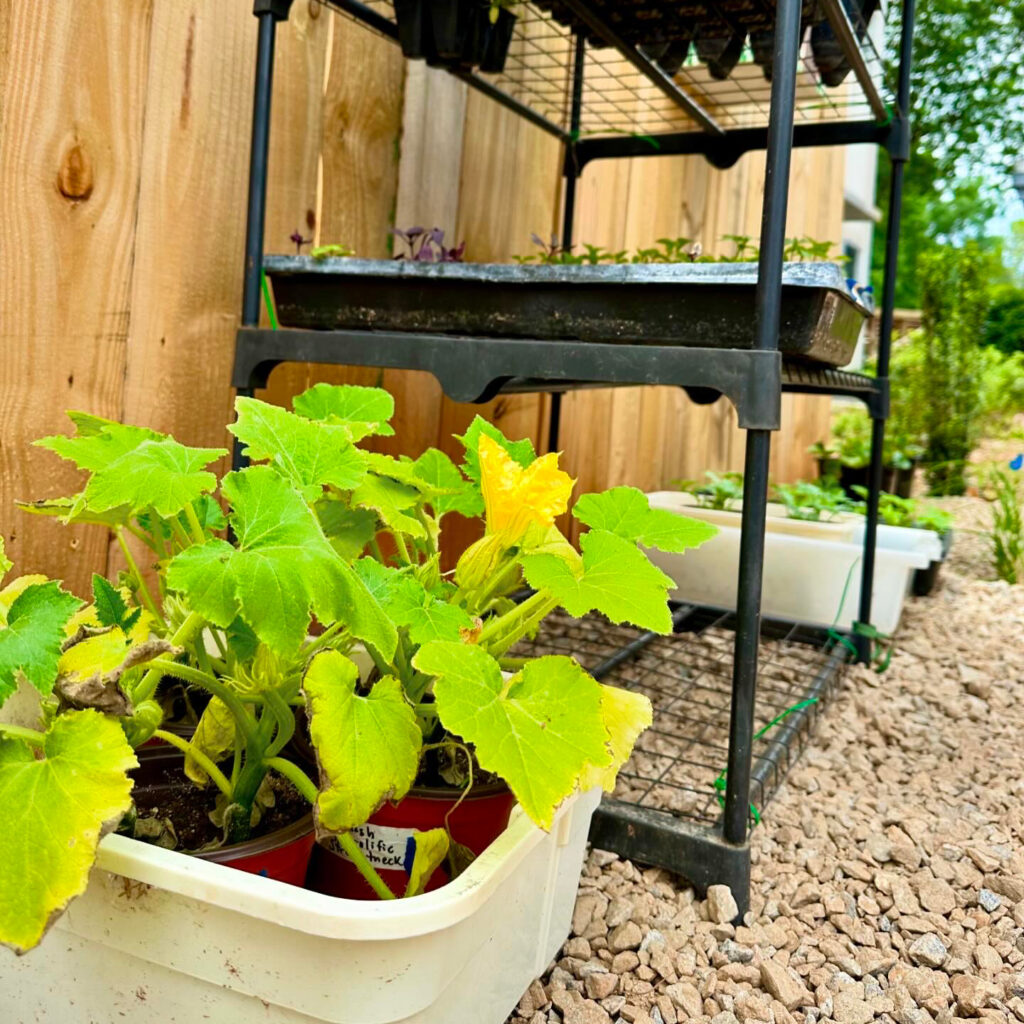
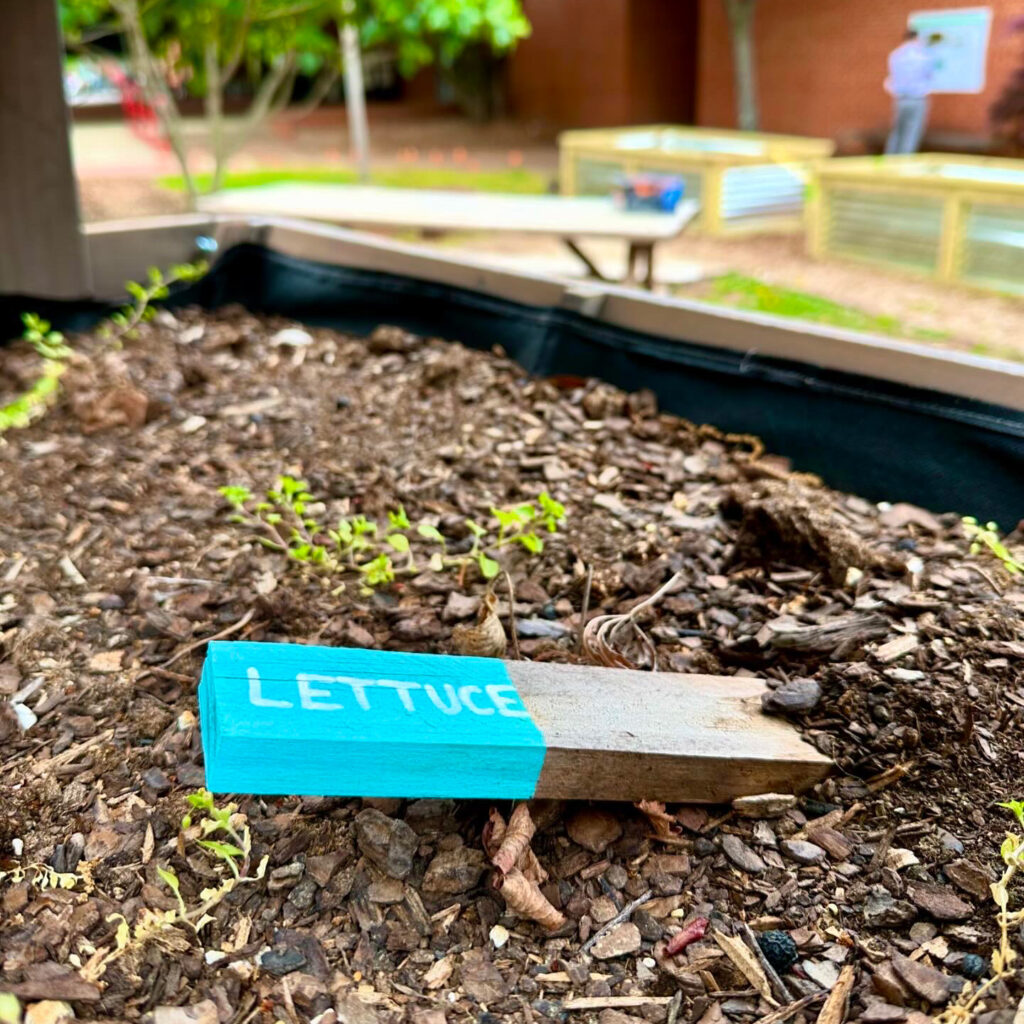
This inclusive approach rallied faculty involvement and inspired them to initiate class projects, such as designing the garden’s irrigation system.
“In the first year, both BAE undergraduate and graduate students were hands-on and engaged,” Gibson says, adding that undergraduates integrated their coursework into the project.
“I could rely on at least one or two students showing up and actively contributing ideas beyond completing tasks. Their interest in the garden was encouraging, and I hope they’ll inspire others among their peers or faculty members.”
To students who want to create a similar garden, she advises: “Just go for it. If you’re passionate, pursue it. Support will follow. Seek guidance, ask questions and fill knowledge gaps with experts. Don’t fear mistakes; they’re a part of learning.”
This post was originally published in College of Agriculture and Life Sciences News.